Bulk-generate & schedule posts in seconds with Smart Scheduling. Try now!
Content Funnel Conversions-How to Create a Content Funnel that Converts
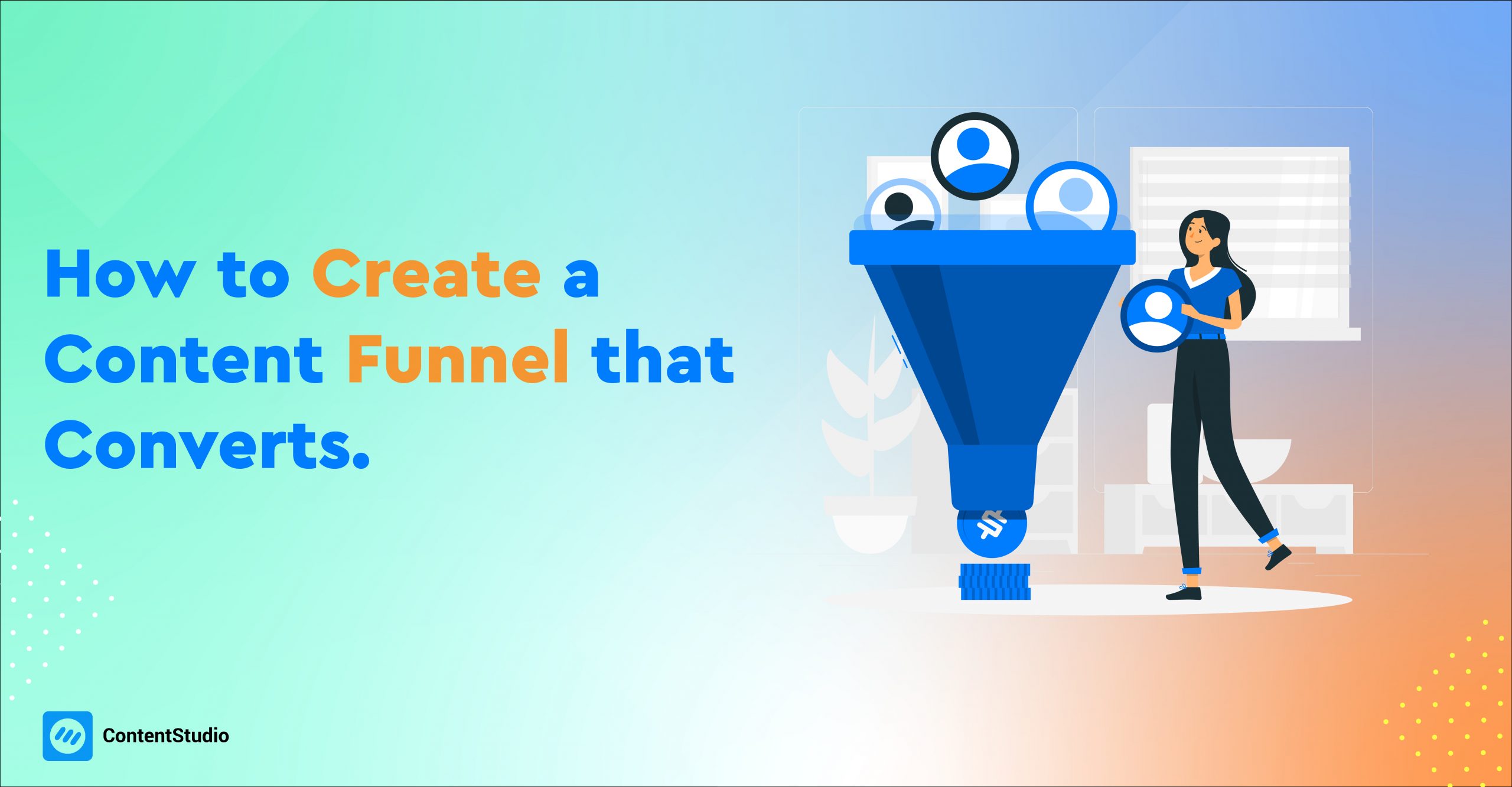
We all have been guilty of scrolling through social media feeds, and the moment we stumble upon an enticing offer to avail, we get curious and want to know more about it. And that’s how marketers cash in on our attention and use various digital marketing tools and techniques to accomplish their mission.
Email marketing is one of the essential marketing tools in today’s digital marketing game. However, some of the e-commerce stores, SAAS companies, and internet marketers are way ahead of their competition. What they have been doing is that they’re using highly effective content with email marketing techniques to attract, build, and convert the audience.
The way how it is done is no rocket science. Social media influencers and expert marketers try to understand the need of the target audience and create a bundle of valuable content afterwards. Then, there are online tools that work as the content gateways and help influencers and experts put a wall in front of their content. To get access to the desired content, the visitors need to put their names and email addresses. And that’s how the content funnel starts converting.
However, it’s not that simple, meaning if the audience doesn’t show any interest in the offer, then it won’t work. It’s important to understand both sides of the spectrum so that you could come up with content that does the job.
It’s vital to discuss the nitty-gritty of this idea and give you an inside-out look of what to expect from a successful content funnel strategy. To do so, let’s shed some light on the content funnel journey to comprehend the stages involved in the process.
The Content Funnel Conversion Journey
There are three fundamental stages of the content funnel conversion journey through which a prospect goes through to convert, so to speak.
Stage 01: Awareness
Awareness is the stepping stone of this content funnel conversion journey. Brand awareness comes in different shapes and forms. Companies do social work such as charity, events, and seminars to become relevant among the masses.
If a brand doesn’t stand out, the audience isn’t going to notice it. Often, brands go one step further in explaining their speciality — they try to convey what they believe in.
When they highlight what a majority of people are feeling or thinking, they immediately grasp a chance to represent the audience. You must have seen different brands opt for different kinds of publicity campaigns such as supporting a cause, donating to a charity, giving away free products, and sponsoring the events.
Sometimes, the ultimate goal isn’t to get quick sales, but instead, the brands target brand awareness. They do this for the following reasons:
- To win the attention of a specific community.
- To get the acceptability in the masses.
- To place their product into the consumers’ subconscious minds.
For instance, a lot of brands, multinational companies, and entrepreneurs joined in the Black Lives Matter campaign and showed their solidarity with the people of colour to fight against racism.
Companies often use causes not just to help the suppressed but also to spread the word about what they believe in; it all adds up to their brand awareness campaign.
There are various ways to contribute to any cause, but you’d find brands use the following three strategies the most:
- Social media content
Brands put out social media content that supports or educates the masses on a certain issue. They are well-aware of the outcome that it won’t make a difference in the sales graph, but they prefer people over money and do it anyway. They eye a long-term relationship and a long-lasting connection with the audience.
- Online ads
Online ads are yet another avenue for raising a voice as well as spreading brand awareness. Most brands support causes on social media, and very few brands go one step further and run online ads on specific subjects that don’t necessarily translate into sales, but they do it anyway.
- Collaborations
Companies also collaborate with other companies to bring awareness to the masses. Such collaborations often attract the audience and help them spread the core message.
As said before, building awareness isn’t always for generating sales and revenues, but instead, it helps the brand develop relevance in the market.
Stage 02: Consideration
Once you’ve developed some brand awareness through various means, the next up is the consideration phase. It involves trust-building with the audience through solving a problem or by becoming their voice.
A trust-worthy relationship can’t be built on a whim. A brand might have to start with understanding the needs, wants, and values of the audience.
When the Black Lives Matter campaign went mainstream and a lot of companies and brands raised their voice in support, Canva also contributed to the campaign. They provided loads of Black Lives Matter featured images/icons for free.
There are three essential points to remember for the consideration phase:
- Coherence
Coherence is the ability to form a unified standing under a single umbrella. A brand must convey a message through words and actions that it stands with the customers and always thinking about them.
- Education
Often, challenges create a vacuum to be filled. When brands or companies take responsibility for filling that vacuum by starting a conversation or setting a new trend, it could educate the masses on various topics.
- Customer care
Consideration isn’t done without taking care of the customers. Social media provides a canvas to paint a picture of your brand; make sure that you’re treating customers with respect and dignity on social media as well as in person. When unhappy customers take on brands on social media, especially if they have had a bad experience with them, people often notice how brands respond to criticism and negativity. Therefore, it determines how trust-worthy that brand can be.
Stage 03: Conversion
Once you’re done with the awareness and consideration parts, the last stage is the social media business conversions. To seal the deal, you must have clarity about the conversion beforehand. Do you want to sell a digital product? Do you want to push readers to the newsletter? Do you want to generate a lead?
Once you’re crystal clear about the conversion goal, take care of the following elements that give a prospective customer some confidence to go ahead and buy your product:
Call-to-Action
A clear call-to-action goes a long way. You need to always let your customer know what the next step is.
Do you want them to download something?
Have you had an online shopping experience where it seemed impossible to find the checkout button? So don’t frustrate the buyer with unusual call-to-action buttons or bombarding them with the upsell deals.
Best Offer
Make sure that you’re giving the best offer to your customer whether it’s pricing or quality. When a customer pays for a product, the expectations are always high. So try to deliver what you’re promising in your offering.
Money-back Guarantee
Money-back guarantees often showcase the confidence of the sellers. In some cases, customers return the products and ask for the money back, but don’t let it stop you from offering the money-back guarantee. It solidifies your commitment to delivering value to the customers.
These were three stages of the content funnel journey; it begins from creating awareness and ends with customer acquisition.
Before I head over to the steps involved in creating a content funnel that converts, you must embrace five facts about content funnels.
- Understanding the “audience needs” gives you a head start. What it means is that the better you know who you should be helping, the easier it would be to reach out to the target audience.
- A/B testing helps you determine what type of content works better. Don’t sit back and relax after creating a single content funnel. You may have to try out multiple content funnels to find out which ones outperform others.
- Useful content contributes to the content funnel success. The reason is that no one wants to download an average PDF ebook or receive a sequence of irrelevant email newsletters. So you better choose the right topics for the content funnel and make it full of value for the audience.
- An effective content distribution brings in more engagement. What it means is that your content funnel won’t be super successful unless you have a content distribution strategy. Create a content strategy and set up social media automation with social media management tools, so that you get an influx of visitors from search engines and social media.
- Opt-in tool design plays a vital role in making content funnel work. Have you ever paid attention to any mundane opt-in tool on the sidebar? Most visitors would ignore such opt-in forms. On the contrary, if there is an attractive opt-in form with a catchy tag line written on it, they’re likely to notice it.
To rip open the whole idea of creating a content funnel and why it’s working for so many, I’ll dig deeper into this and share what steps you need to take to stand out from the rest.
Steps to create a content funnel that converts
Here are five steps for creating a content funnel that converts:
-
Find a Pain Point to Remedy
If you have been working on social media or in the internet marketing space, you’d know how difficult it is to grab the attention of the audience.
However, if you start talking about what struggles you went through and how you got over your problems, then it could turn things around. People pay attention to the stories of redemption, but they respond to solutions and problem-solving content more than anything else.
So what we can take away from this observation is that people immediately react to the content that is intended to solve their problem or remedy their pain.

Back in 2016, I randomly made a 25-minute video on how to start freelancing on my Urdu YouTube channel, and it kept on attracting viewers for the next few years. The video crossed 100k views in 2020.The reason I made that video was that the local audience was asking so many questions about freelancing, and I thought to make a video about it once and for all. I wasn’t expecting this much attention on that video. All I wanted to help the audience and remedy the pain point.
You might wonder how you can find the pain points of your audience. Deep breaths, everybody!
Here are four simple ways to find the pain points of your audience:
I.Look at the YouTube comments
If you have been active on YouTube, then you’d know that managing YouTube comments becomes a hefty task once you start to get some traction. I’m a big supporter of engaging with the commenters and replying to every human comment. Anyway, besides answering the comments, what you can do is pinpoint some of the question-based comments and try to understand what your audience wants to know. It’ll help you understand the audience’s problems that you can solve.
II.Create a poll on Facebook or Twitter
Creating a poll on Facebook or Twitter is a great way to read the followers’ minds. It’s easier to contribute to a poll. All respondents need to do is click on the suitable option, and that’s it. You can even create a poll on the community page of your YouTube channel.
III. Go through email inquiries
Email inquiries are a part of the process. It doesn’t matter whether you’re a sole proprietor, blogger, freelancer, or a company — we all get emails. Some of us may get email inquiries from prospects, while others may receive from students or even fans. Therefore, going through our inbox could be a way of putting our finger on the pulse of the audience. We can easily understand what fans or prospects have continuously been asking us.
IV.Check your social media DMs
Social media DMs is a modern-day tool of communication. Most people don’t prefer emailing and usually send a DM on Facebook or Instagram. So don’t neglect the DMs on Twitter, Instagram, and Facebook. You may come across someone’s message that allows you to find out about a big pain point of your audience.
I’m sure that now you have got my point. The reason I emphasized a lot about finding a pain point before creating a content funnel is that I don’t want you to create something that people don’t need it.
-
Create a Value-driven Content
Once you’ve identified a vital problem to address, the next up in the content funnel setup is the creation of the value-enriched content that ACTUALLY makes a difference.
You must have heard about the term “opt-in bribe” in the email marketing world. How it works is that you create a valuable piece of resource and put it out for free to download in return for the downloader’s name and email address. Interested people fill-up the form and instantly get access to the resource. As a result, the resource provider gets the new subscribers, and the subscribers get their hands on a useful resource.
The idea of creating a content funnel is somewhat the same as an opt-in bribe. However, the difference is that you’re using content as bait to bring subscribers down the funnel.
Therefore, you have to take care of the key elements of creating value-driven content that helps the funnel conversion:
The point I’m trying to establish is that valuable content is the backbone of the content funnel. The better the content, the higher the chance of the conversion.
The team behind Onix-systems wants prospects to join their email list and get access to a free ebook. Take a look:
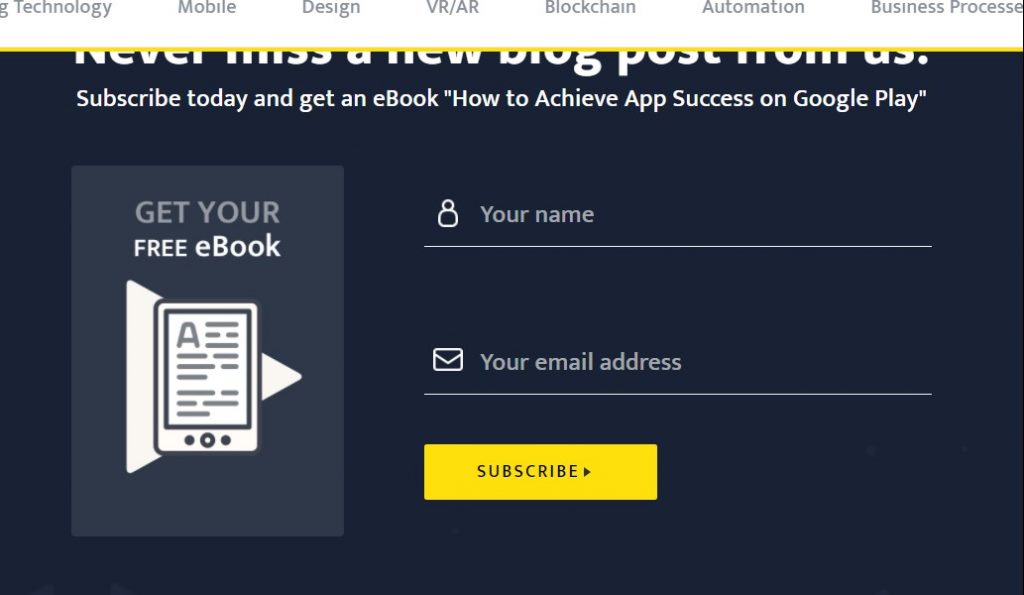
What it means is that when you sign up for their email list, you’ll receive an ebook for free.
They’re offering the value upfront through their blog content and then providing an ebook to solidify the relationship.
The essence of this point is that if your content doesn’t stop readers from leaving the page, then it won’t engage further. Therefore, it would be highly unlikely that they’d enter the funnel. Captivate the audience with your high-quality content and then expect them to convert.
I.Content should be relevant to the target audience so that you don’t have to worry about getting the attention. Once the audience stumbles upon the content, they know what you’re offering to them.
II.Choose the suitable content types so that you don’t have to struggle to get the eyeballs on your bait. What I’m trying to say is that if you’re a massive readership on your authority blog, then don’t expect people to convert on your YouTube channel that doesn’t have much following.
III.It should irresistible in nature means it must be so useful and helpful that it becomes impossible to ignore. The topic, category, and type would determine how irresistible it turns out to be for the audience.
IV.It must push the audience to get access to the rest. The content must design in such a way that it urges the audience to go one step further and get access to the rest of the guide or tutorial.
-
Build an Email Automation Strategy
We’ve discussed finding a pain point to remedy and creating content that brings the eyeballs, but if there is no email automation in place, then everything goes in vain.
One of the main pillars of the content funnel is an email automation tool. If you haven’t had a chance to dip deeper into email automation, then let me rip open it for you.
Email automation is a process of triggering an email or a series of emails upon the completion of a certain task, such as, filling up the sign-up form and submitting it successfully.
Perrill published an article on marketing automation and explained the email automation workflow in a perfect way.
Take a look at this diagram:
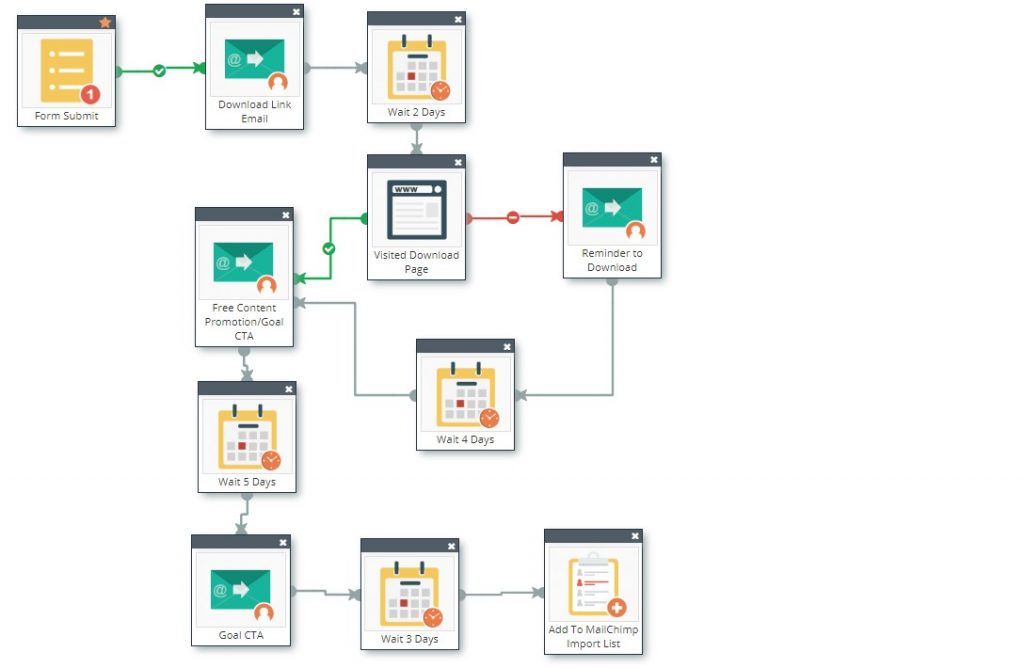
I’ll shed some light on various email programs that have automation feature, but before doing so, you should know the core email automation elements that will make email automation possible for you:
Email marketing software
It’s essential to choose a well-reputed email marketing software that has versatile features to pull this off. Make sure that your email marketing tool has features such as automation, landing pages, and triggers.
Sign-up Forms
Some email marketing softwares have rather simple sign-up forms that don’t attract readers. Try to pick the best out of the available sign-up forms and see how they perform.
Landing Pages
Landing pages are another important element of the email automation process. They’re used in the content funnel to offer a download-able item such as an ebook or a checklist or software. Landing pages are a vital part of the email list building process as well.
Opt-in Bribe
An opt-in bribe is a bait that is offered to entice the readers to take action, for instance, download the item to enter the content funnel.
Here are some of the popular email marketing tools:
- MailChimp
- Aweber
- ConvertKit
- Constant Contact
- Mad Mimi
What step #3 tells you is that pick an email marketing tool that has an email automation feature so that you could transit the interested audience into the funnel.
Once you’ve chosen the right email marketing software to use, the next thing you might want to do is to pay attention to what you can offer to the audience to make it work.
Select an Opt-in Bribe
I’ve briefly explained what an opt-in bribe is, but if you haven’t figured it out yet, then here’s the two-line explanation: any downloadable item that you can offer to your audience in exchange for their email address, it’s called an opt-in bribe.
Here are four types of opt-in bribes that most digital marketers, brands, and bloggers use:
I.eBookseBooks are wildly popular when it comes to offering an opt-in bribe. They got to be authentic, useful, and relevant to make the offering interesting enough. Otherwise, the opt-in strategy would fall apart. For instance, if you have a blog in the blogging tips niche, then you can offer a free ebook that contains 100 untapped long-tail keywords and put it out. All you need is to market it properly, and the audience would go gaga over this opt-in bribe.
II.SpreadsheetsSpreadsheets mostly contain data, but some experts apply formulas on spreadsheets and try to solve a problem through that. For instance, Doug Cunnington created a KGR formula to help analyze the low-competition keywords. Furthermore, it could be anything that assists the audience whatsoever.
III.ChecklistA checklist could any list of items, resources, products, or ideas that can entice the audience to get their hands on. It could be in any format such as PDF, excel, doc, et cetera.
IV.Email SeriesIt’s an email sequence of any training, tutorial, or guide that the subscribers receive over the next few days after they are opt-in for it.
Furthermore, it’s essential to have good email marketing software along with a fantastic opt-in bribe to create an exciting offer. If you come up with an average opt-in bribe, it might not work very well.
- A/B Test Multiple Content Types
A/B testing is crucial to almost every aspect of sales and marketing. A/B testing or A/B split testing is essentially a methodology in which you test out primarily two cases side by side and see which ones bring out the best result. There should be zero ambiguity over the legitimacy of A/B testing as it’s a tried-and-test marketing technique.
We A/B test a lot of things in digital marketing, for instance:
- Different versions of an ad in online advertising
- Various types of articles in content marketing
- Posting the same piece on multiple social media platforms
So the purpose is essential to check out multiple content types to determine which one performs better. However, the idea of the content funnel remains the same; you put out a specific form of content to attract the audience, and the audience responds to it. The more it engages the audience, the higher it’s likely to convert.
Here are three main types of content you can try out to find out which one works well for you:
- Blog Posts
Publishing blog posts is a popular way of attracting, engaging, and converting the audience. Therefore, they could turn out to be an important threshold to enter the funnel. There is no rocket science involved in making this conversion happen. All you need is to put out relevant yet useful content for the prospective audience and offer an irresistible opt-in bribe that converts. Once the blog posts start to get traction via organic traffic or social media sharing, the content funnel would start to see some activity around as well. - Videos
Articles aren’t the only way to bring the audience into the content funnel. Videos are also a significant content type that could do the job. You can put out YouTube videos that solve the problem of your audience, and eventually, offer an additional resource via a lead magnet. You’ll be able to see how it works out for you in a few days. There are so many YouTubers who use YouTube video description for building email lists via opt-in bribes and lead magnets. - Podcasts
The podcast is one of the most popular types of content out there. If you haven’t got into audio content yet, then perhaps you don’t know much about podcasting. A podcast is an on-demand audio content that is distributed on the internet via RSS feed reader. I’ve listened to many podcasters who offer free downloadables to their audience through their podcast; they repeat the URL more than once and add the link in the show notes to make sure that the audience finds it. It won’t hurt to test out this content type as well.
The premise of this point is to make sure that you’re not leaving money on the table. Suppose you’re using written content on the blog to push people down your funnel by offering a free ebook. You have no idea how the same opt-in bribe would have performed if you tried the video content on YouTube and Facebook.
Therefore, a little bit of testing would show you which content type outperforms others; It’d impact your content marketing decisions afterwards.
What’s the Takeaway?
The nitty-gritty of this blog post is that if you want to build a successful content funnel that does the conversion for you, then start with pinpointing the potential audience by understanding your strengths.
Once you know who you can help out through your expertise, skill, or knowledge, you’d have the leverage in the communication.
Afterwards, you can put out valuable content that resonates with the potential audience and encourages them to take the action of signing up for additional content. It’s also necessary to live up to your promise and deliver high-quality content once the subscribers enter the funnel.
The story doesn’t end here. Instead, you can test out different content platforms, so to speak, to figure out what type of content works better for you. You can always double-down on the content type that converts well.
Hence, creating a content funnel isn’t just about creating a few articles and a bait to offer — it requires a complete strategy that encompasses different levels of interaction with the audience.
The journey begins with creating awareness and ends with customer acquisition, but during this process, there are lessons, successes, and failures that all combine and shape up our experience.
What else do you think is necessary for building a content funnel that converts?
Recommended for you
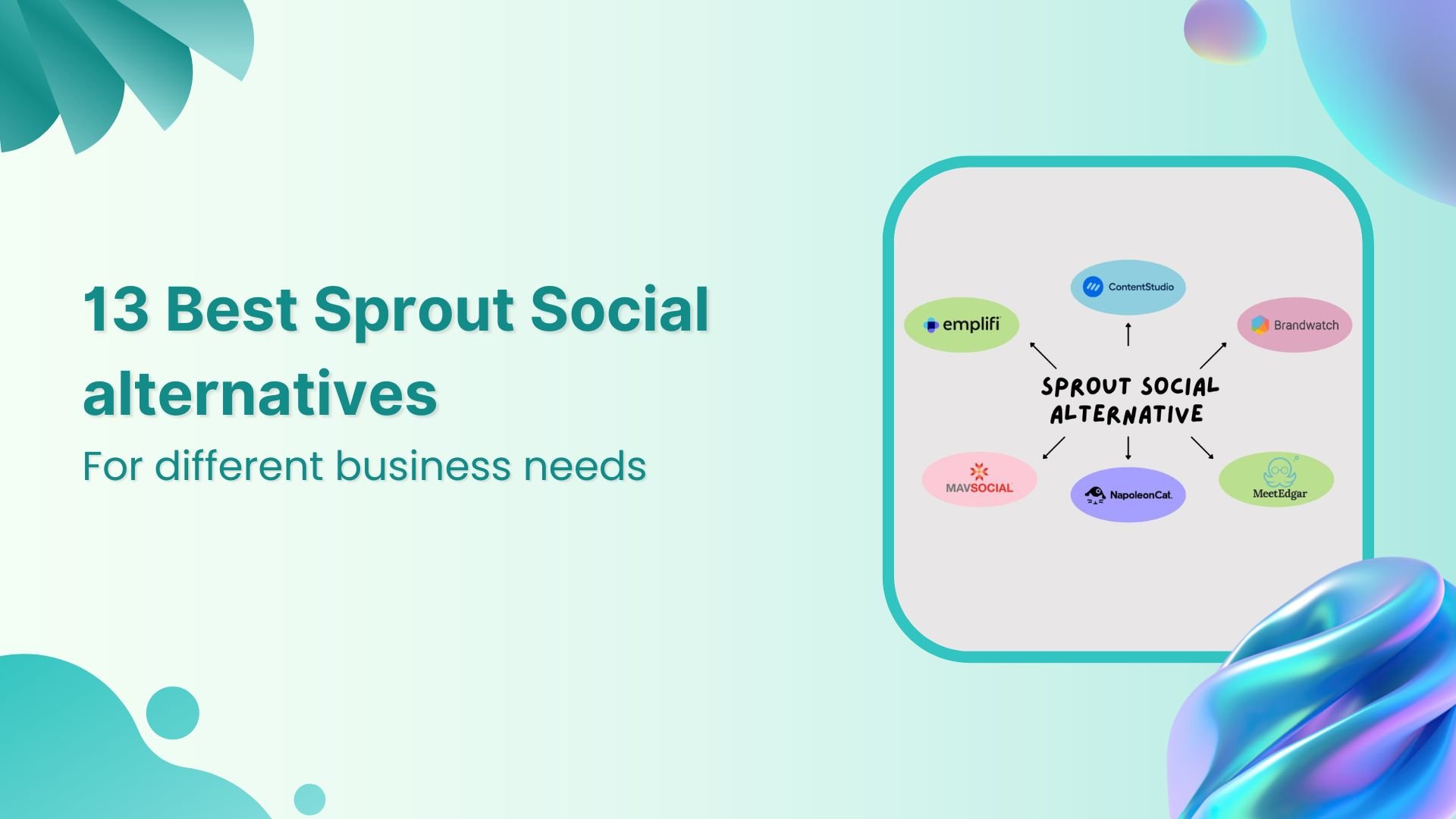
13 Best Sprout Social alternatives for effective social media management
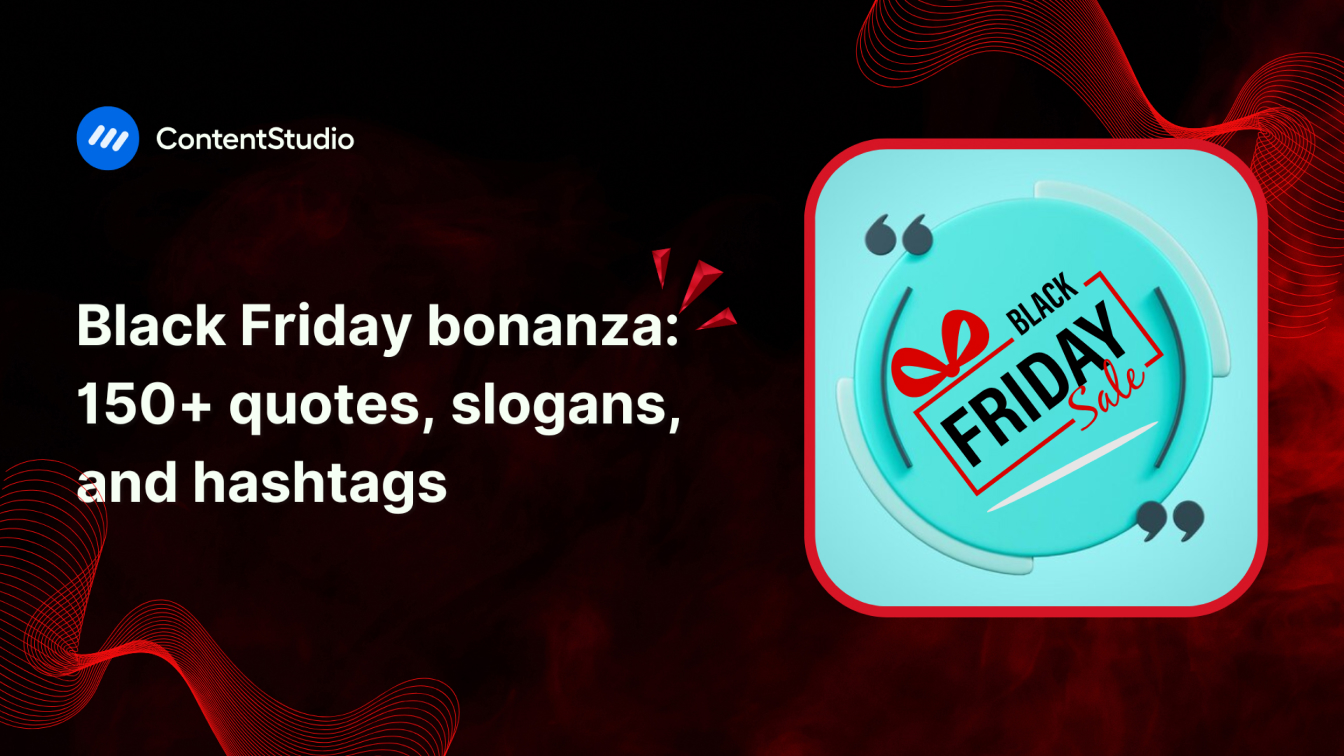
150+ Black Friday quotes, hashtags, and slogans to boost sales

Why is an integrated marketing campaign beneficial for your brand?

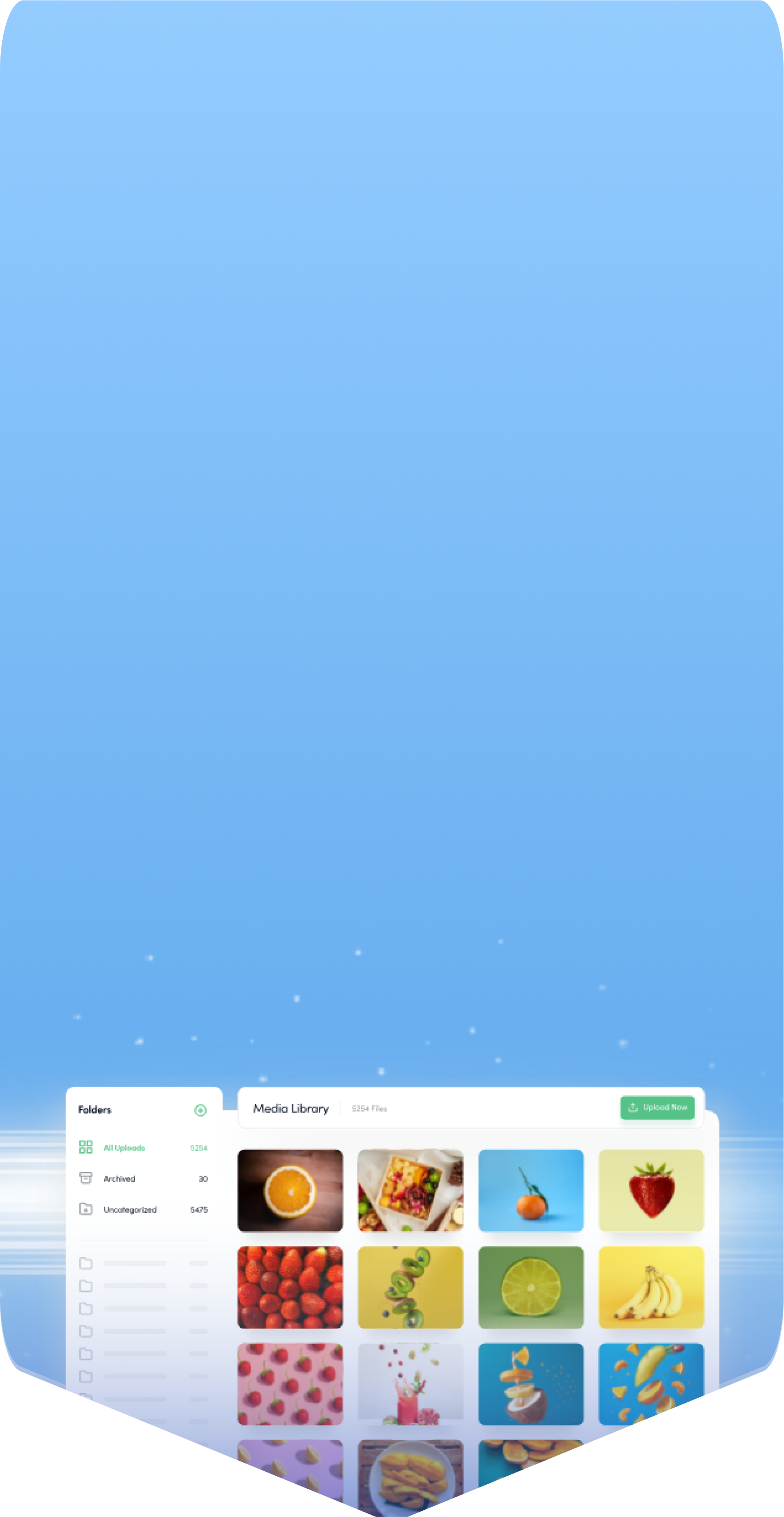
Powerful social media management software
14-day free trial - No credit card required.
